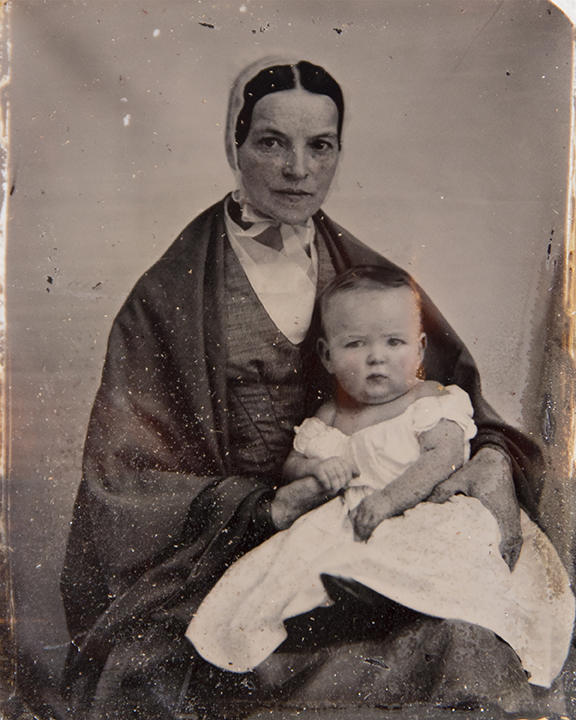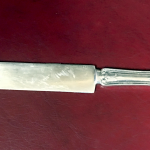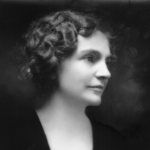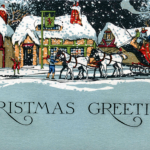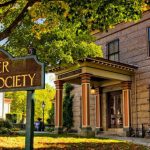One of the things I most enjoy about my work at the FRHS is the research – the thrill of the hunt, actually – that goes into bringing to fruition the desire to “put a face to the name.”
Case in point: The Recollections of Anna (Robinson) Fiske Harding (1845-1929), a previously unpublished document, written in letter form in 1927 by a Fall River native and intended solely for her children and grandchildren. The manuscript – absolutely fascinating – details Anna’s childhood in Fall River and is written in a charming, chatty, sort of roll-off-the-tongue style.
Anna was the daughter of Dr. Isaac Fiske (1791-1878), a devout Quaker, by profession a homeopathic physician practicing in Fall River, and a “great reformer” who actively participated in the Anti-Slavery movement; his Pine Street residence was a station on the Underground Railroad, and often harbored fugitive slaves. Interesting family, the Fiskes.
Due to the significance of the manuscript, it was selected for inclusion as one of the FRHS’s exhibits for Black History Month 2017; with that aim in mind, it was slightly edited, dates and additional information were added in square brackets for clarity and context, and it was posted on the FRHS website.
The only problem, in my estimation, was a lack of photographic material for illustrating the text.
Rather a dilemma, that.
What did these people look like?
Anna’s text is descriptive, and allowed me to fabricate images in my mind – of course your mental depictions would be different – but that flight of fancy was of absolutely no practical use, other than as a personal amusement. A whim, yes, but historically speaking it served no purpose.
So, the hunt for descendants and, ideally, Fiske family photographs, began.
The search wound its way through the United States and Canada – Anna moved to Canada in 1876 following her marriage – where, several months later, an image of Anna as an elderly woman was discovered in the private collection of a family member; finally, a face. And I wasn’t disappointed – far from an old Yankee battle-axe, she appears the quintessential grandmother of old, well-dressed, with sweptback white hair, in controlled disarray, framing a kindly face. And it appears this girl, reared in the strict Quaker faith, possessed somewhat of a vain streak – horrors, a sin; worn around her neck, choker style, above the ubiquitous string of pearls, is a wide band of ribbon, an age-old device employed by mature women in an attempt to disguise a sagging neck. Well into old age, it seems, she retained her affinity for ribbons – as a schoolgirl she admittedly traded fruit pilfered from her parents’ garden to “purchase the loan of a fancy ribbon to wear during school hours.”
In fact, the photograph, taken perhaps a decade before Anna wrote her Reminiscences, was the only image of the subject that this descendant possessed.
Gratifying – yes, very much so – but what of a younger Anna, and other family members mentioned in the text? Did additional images exist in other collections?
And so, the pursuit continued.
And that, my friends, led, nearly one year later, to a important discovery and a Eureka moment.
In the collection of the Manitou Pioneers Museum in Neilburg, Saskatchewan, Canada, was a small cache of Fiske family material – deposited there by a Fiske descendent – including a few daguerreotypes, some in their original cases, done in Fall River when the medium was in its infancy.
Among them were: a fourteen-year-old Anna, her mother, her father, and her aunt, all of whom factor into the Recollections.
Daguerreotypes are extremely fragile, and the Fiske images exhibit various stages of deterioration, but the fact that they survived is remarkable – the fact that they were discovered, fortuitous. This image dates to the 1840s and depicts Anna’s mother, Mrs. Dr. Isaac Fiske, née Anna Robinson (1808-1887) – a Quaker fashion plate, no doubt – holding a so-far unidentified child.
Yes, a Eureka moment, and then some.
The moral of the story: Persistence oftentimes pays off.
So does luck.
And photographs bring a story to life.

